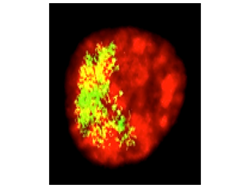In August Asymmetrex Will Present Details of Its Crowdsourcing Campaign to Determine the Extent of Application of New Technologies for Counting Adult Tissue Stem Cells


Boston, MA (PRWEB) May 26, 2015
Just the characterization of being a new breakthrough technology that addresses a long-standing unmet biomedical need does not guarantee immediate acceptance. In particular, a new solution to a problem that has seen many prior failures is often met with significant skepticism. The challenge to gaining acceptance and use is an irony that is often an unappreciated aspect of scientific innovation.
As a small, new start-up company, Asymmetrex has found that building acceptance of its new tissue stem cell counting technologies is unexpectedly challenging. Asymmetrex director James Sherley observes, “In January, when we reported online our new technology for counting adult tissue stem cells, I expected our e-mail inbox to be full of letters of interest soon. But, so far, that has not been the case.”
Asymmetrex did not wait long before trying a different approach. On April 29th, the company launched a crowdsourcing campaign with two goals: First, to increase general visibility of its innovation in adult tissue stem cell counting; and second, to engage cell biologists, regenerative medicine physicians, and tissue engineers worldwide in independent evaluation of the technology for detecting and counting their favorite adult tissue stem cells. The technology is universal, being applicable to stem cells in different tissues of different mammalian species, including humans. It would take many years and a prohibitive level of financing for Asymmetrex to demonstrate the projected wide extent of application of its technology. However, a successful crowdsourcing effort could achieve wide acceptance in a year or two.
Asymmetrex’s presentation at the 8th International Epigenetics, Stem Cells, Sequencing & SNiPs-2015 Meeting will be the third event in the ongoing crowdsourcing campaign. The effort was launched with a primary targeting to LinkedIn groups in relevant topic areas like stem cell biology, drug development, regenerative medicine, and tissue engineering. Based on the memberships of these groups, a potential audience of 642,552 was contacted. The second event was the May 12 start of a social media campaign to further extend the reach of the crowdsourcing announcement.
The August meeting will provide a good research forum for Asymmetrex to provide more background and technical details of the stem cell counting technology. The annual meeting addresses important developments in the field of epigenetics; and Asymmetrex’s counting technologies are based on unique epigenetic features of tissue stem cells.
The reagents needed to conduct the stem cell counting analysis for research purposes can be obtained from many different companies, allowing any investigator to evaluate the technology. However, Asymmetrex holds patents required to commercialize the method of detecting and counting adult tissue stem cells. The company projects that a successful crowdsourcing campaign will generate significant demand for such commercial products that will accelerate progress in stem cell research and stem cell medicine.
Asymmetrex, LLC is a Massachusetts life sciences company with a focus on developing technologies to advance stem cell medicine. Asymmetrex’s founder and director, James L. Sherley, M.D., Ph.D. is an internationally recognized expert on the unique properties of adult tissue stem cells. The company’s patent portfolio contains biotechnologies that solve the two main technical problems – production and quantification – that have stood in the way of successful commercialization of human adult tissue stem cells for regenerative medicine and drug development. In addition, the portfolio includes novel technologies for isolating cancer stem cells and producing induced pluripotent stem cells for disease research purposes. Currently, Asymmetrex’s focus is employing its technological advantages to develop facile methods for monitoring adult stem cell number and function in clinically important human tissues.